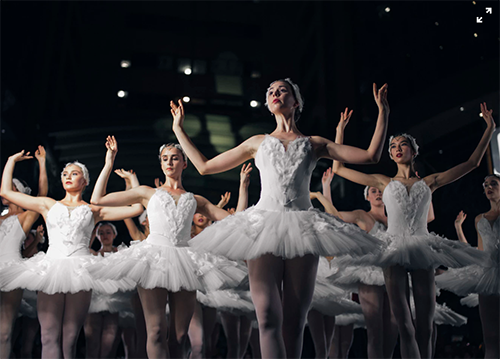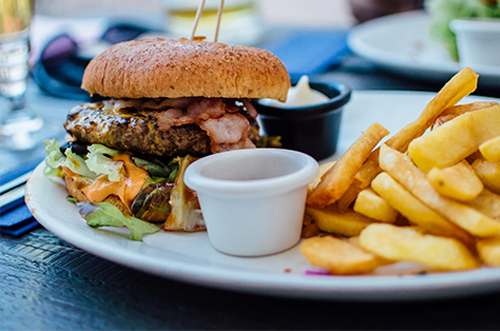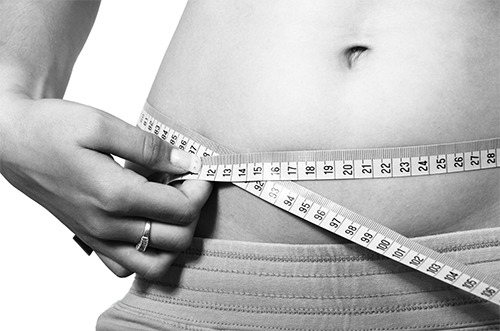There are several ways the Gokhale Method helps a person lose weight. I discovered this benefit of the method from students reporting back to me that they had lost 10 pounds without changing anything other than their posture. This happened frequently enough that it set me thinking about possible mechanisms between J-spine posture and weight loss. There are no studies on posture and weight loss that I know of, so all the pathways described below are conjectures.
Getting rid of pain enables and induces people to become more active. Our students almost routinely return to or take up a variety of athletic endeavors, yoga, dance, and more after getting rid of their back pain. Being active contributes directly and indirectly (better mood, better sleep, etc.) to weight loss.

After learning the Gokhale Method, many students find relief from pain and are able to return to active lifestyles and hobbies. Photo courtesy Unsplash.
The Gokhale Method teaches you to “use your muscles and spare your joints.” Using muscles burns calories, which helps with weight loss. Our students learn to use muscles that are typically “asleep” or suffering “amnesia” in modern urban dwellers. These include:
The glute pack (buttocks). These are among the largest muscles in the body, designed to propel us forward with every step we take. When the glutes are fast asleep, some of their tasks are taken over by the quads. When the glutes reawaken, every step becomes a rep, and the person burns more calories.
The inner corset, consisting of the deeper 3 layers of abdominal muscles and deepest layer of back muscles. These muscles protect the spinal tissues by slenderizing and elongating the torso, thus easing the vertebrae apart and taking pressure off spinal discs and nerves. In modern cultures, these muscles are typically under-used, allowing for wear and tear and pain in the back. In engaging the inner corset whenever the back is threatened, students burn extra calories in a natural way.
Foot muscles. Modern urban feet tend to be quite weak, and it’s difficult for most people to muster up much action under foot. When you begin to activate these muscles, they too will burn a few calories.
With healthy J-spine posture, and using muscles / sparing joints, you will develop more muscle mass. Increased muscle mass results in a higher BMR (basal metabolism rate). Alongside burning more calories throughout your day, you are increasing the rate at which you burn calories — a second-order effect to help drive your weight loss efforts even further.
Here I’m certainly going out on a limb, and this theory has reduced at least one friend to peals of laughter, so you’ve been warned! I find the logic compelling in a commonsensical way, but some people clearly don’t. Having increased tone in the three deeper layers of abdominal muscles is akin to having a built-in corset that offers some pushback to an expanding stomach when you eat. It acts as a delimiter to the volume available to your digestive organs. With a little leap of the imagination, we could suspect that a feeling of fullness or satiety would arrive sooner rather than later, and reduce overeating. There — I’ve said it. And I’m very curious to hear if this sounds plausible or crazy to you.

It’s possible that one’s inner corset encourages a full feeling earlier, resulting in less food consumed. Photo courtesy Unsplash.
Weight loss is almost always a multivariable project. Though we have not done any controlled studies, we have arrived at these intuitions and hypotheses along the way. I’d love to hear from anyone out there on your experiences with weight loss and posture modification.

There are many possible (but unconfirmed) relationships between posture change and weight loss. Photo courtesy Pixabay.
Do you have any additional theories? Which of these do you think has the strongest effect?



Comments
Esther, I think there could
Esther, I think there could be another explanation for weight loss, besides burning more calories. Training in your method is likely to lead to an increase in mindfulness, and, in particular, increased body-awareness. Being more mindful helps one tune in to what the body needs and wants, which might be to eat less and/or to eat healthier foods.
I think Rachel's observation
I think Rachel's observation is really insightful. I would guess this is an important part of it.
Love this insight! Thank you!
Love this insight! Thank you!
I think your theory #4 makes
I think your theory #4 makes sense! And based on my own experience, I also think that the postural improvements learned in the Gokhale Method contribute to a better and healthier sense of self-awareness about the body -- so a habitual tendency to overeat becomes limited somewhat by the new understanding of good body architecture. Something along the lines of "I feel good about my body and want to support it's natural structure and functions, and overeating no longer fits my new body image." Each step "toward the light" of good health (physical and emotional) helps support the other positive steps you are taking, and learning Gokhale has definitely done that for me. I have said this every day for 7 years and counting: Thank you, Esther!
Proper diaphragm function
Proper diaphragm function also increases organ motility, another possible reason good posture leads to weight loss!
I have another theory for you
I have another theory for you. By using the abdominal muscles and increasing abdominal tone, the abdominal muscles become more insulin sensitive. This leads to an increase in insulin sensitivity. By increasing insulin sensitivity in that area, visceral fat is reduced - which further increases insulin sensitivity. All of this counters the insulin resistance that comes with added weigth, especially visceral fat. Keeping healthy posture thus specifically targets the abdominal muscles which are located in the area prone to unhealthy visceral fat. By keeping that area toned and active, you are reducing your visceral fat which directly affects your metabolic health. No visceral fat - no insulin resistance. Insulin resistance is the generally accepted starting point for all metabolic problems.
I love all the coments and
I love all the coments and insights above!
Esther, I think your theory #4 definitly has something! I am working on strengthening my deeper abdominals, ( have ways to go) and I have observed that after some more rigorous excercises when I eat, I do feel something like a push back to my expanding stomach. That makes me take notice and I then I can stop eating. Otherwise, especially when the food is delicious, I tend to go on eating and only after the fact I notice that ooops,- I think I had a little too much!....
Aurelia V
Some people when in pain seek
Some people when in pain seek comfort through eating. Possibly for some, when the pain is relieved the eating stops.
Loving all the new insights!
Loving all the new insights! I'll add eating out of boredom to the list of tendencies that are reduced with better posture and the resultant increased activity.
My stronger ab muscles are
My stronger ab muscles are definitely restraining my stomach. I get uncomfortable now if I go for a second serving. as if there is no room for my stomach to expand.
Modern urban foot muscles are
Modern urban foot muscles are definitely weak (rampant plantar fasciitis etc.), pampered by too much padding and cushioning in shoes, it flows up with weak ankles and gradually tightening lower legs, limb stiffness and then little interest in walking, underactive glutes and so on. The more we move the more we lose (calories that is).
There seems to be plenty of glute activation and core strengthening exercises out there but little about foot muscles, especially the deep intrinsic ones.
Great theories, you've sold me.
I completely agree with
I completely agree with others above that the Gokhale Method is a tool for mindfulness; and enhanced mindfulness and self-awareness reduce the likelihood of overeating. My sisters and I are all around 60, and they've struggled to maintain a healthy weight since we were in our 20s; this mirrors our mom's experience. I got into Tai Chi, meditation and the Alexander Technique shortly after college, and with almost no attention or effort, my weight remains at what it was when I finished college 40 years ago. I experience the Gokhale Method as a profound self-awareness practice. And after you've actively cultivated tuning in to your body for a while, it's hard to overeat enough to develop a weight problem.
Thanks so much for all the
Thanks so much for all the above info such good stuff to chew on and be mindful of!
Thanks so much for your
Thanks so much for your amusing pun!
I find that when I'm not
I find that when I'm not grounded, I tend to want to eat to feel safe and cared for. When standing or sitting correctly, grounding follows. The better I get at correcting my posture, the less I feel inclined to snack or overeat.
Reading your comment inclines
Reading your comment inclines me to ground myself and feel part of a larger, more cohesive universe instead of being preoccupied with the cares of the moment. Thank you!
To add to all of the above -
To add to all of the above - I always wondered why I had such a big belly and not the nice grooves that I saw on flat bellied women on the beach - so I was forever beating myself up for being greedy etc. With my new corset I automatically have a flatter belly so I look & feel slimmer, so there's an incentive in itself. I'm not sure I've lost much weight, but my body image and confidence are much improved and I no longer worry about my weight or my shape.
Thank you, Esther!
That's wonderful, Pauline.
That's wonderful, Pauline. Truly gladdens my heart. It's a burden to beat yourself up, so however you get away from that is a freedom to cherish. And this is a great health-improving way to do it. Inner corset is a gateway to an active life without wear and tear. Congratulations!